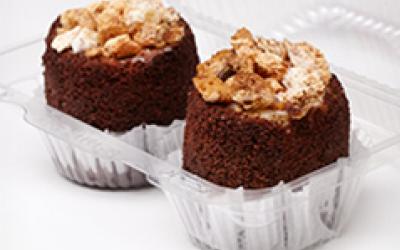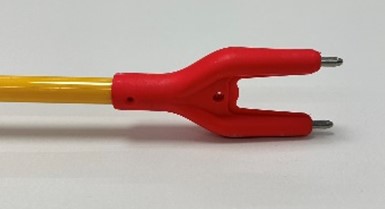Is it possible to give chickens apples and use the leaves for bedding

In the APPLE season, when tree branches are bursting with fruits, a novice poultry farmer has questions - is it possible to give apples to chickens, will they overeat, and are the leaves suitable for bedding? Let's go through the points
Chickens really love apples, and the skin and flesh are a nutritious and healthy treat. Apples contain vitamins and minerals, as well as pectin and amino acids.
If the chickens have the opportunity to get to the apple trees, then they will try to get to the fruits. Chickens will not overeat apples unless they are hungry. Therefore, if you provide the bird with a balanced diet, the chickens will not peck too much and will not suffer in any way, no matter how afraid they are on the Internet about poisoning the bird with cyanide contained in the seeds.
Yes, the seeds contain a tiny amount of poison inside, but your chickens will never get sick from 6 to 10 seeds inside an apple. Therefore, it is safe for birds to eat apples, including the peel and seeds. The greatest amount of nutrients in apples comes from the peel, which means that you don’t need to peel the fruits, just cut them into slices.
If each chicken gets half a good (not rotten or moldy) apple three times a week, it will only benefit. Of course, the number of apples in the chicken's diet should never exceed the amount of feed received.
An apple treat is easy to turn into a real circus show and amuse children or guests. For example, sunflower-stuffed apples will make a splash in the chicken community. For four apples, you need to take half a glass of natural unsalted peanut butter and half a glass of seeds. The seeds must be crushed in a coffee grinder, mixed with peanut butter and stuffed with an apple, removing the core. On top of each apple, also grease with oil and offer to the chickens. It's best to do this on the paddock, as you'll see major league play in "chicken football."
The second option is to make vitamin garlands from slices of apples, beets, carrots, stringing the slices on strong twine and hanging them in the chicken coop. Most importantly, do not forget to remove the rope later so that it does not accidentally fall under the feet of the chickens and they do not choke, mistaking the twine for a huge worm.
As for collecting autumn leaves for bedding, this is a common way to save money. Driving through the neighborhood in autumn, you can often see large black garbage bags stuffed with dry leaves. There is nothing wrong with asking the owners to donate them and get free poultry material.
And if you yourself have gardens, then wait until the leaves dry, for which you periodically stir them with a pitchfork, then collect them in bags and send them for storage. To cover the floor in the chicken coop, you can mix dry leaves with clean straw, including for the deep bedding method. After use, the leaves turned into fertilized compost are easy to shovel and send to the beds.
For nest boxes, experienced poultry farmers advise collecting birch leaves in autumn.
In any case, dried, rot-free leaves are a great natural resource to help keep birds warm in the winter and cheer them up when you spread a pouch of enchanting golden autumn scent in the chicken coop during the cold snowy months.
Read together with it:
- Drink slowly, with pauses. How not to get drunk at the New Year's table, said a narcologistDecember 31, MINSK . New Year holidays are a time for relaxation, joy and meeting with loved ones. However, ALCOHOL consumption often leads to unpleasant consequences: hangover, deterioration of HEALTH and general malaise. Psychiatrist -narcologist, HEAD of the department of paid services of the Minsk Regional Clinical Center "Psychiatry-Narcology" Tatyana Sinyavskaya told a BELTA correspondent in...
- "Великолепная восьмерка". На какие продукты чаще всего бывает пищевая аллергияНовости темы Какие продукты наиболее опасны для аллергиков и как это связано с тем, в каком регионе мы живем? На вопросы проекта "В теме. Здоровье" ответил врач аллерголог-иммунолог, кандидат медицинских наук Дмитрий Буза. - Каждый человек индивидуален. Что для одного будет являться аллергеном, для другого будет пищей, и наоборот. Здесь очень много зависит еще от генетики. Если мы говорим о наших ...
- Honey, procedures, excursions. 39 children from Kherson region undergo health improvement in Smorgon district25 March, MINSK . A group of children and accompanying adults from the Kherson region, mostly evacuated from the areas currently under shelling, arrived at the Minsk railway station on the evening of 14 March. More than 10 days of rest and recuperation are already behind them. BELTA correspondents visited the Lesnaya Polyana children's rehabilitation and HEALTH centre in Smorgon district and found...
- Union construction, preparation for the Supreme National Assembly and personnel from the KGB. Details of the President's WeekALEXANDER LUKASHENKO during a meeting with the Governor of the Bryansk Region of RUSSIA Alexander Bogomaz Alexander Lukashenko and Vladimir Putin during a meeting of the Supreme State Council of the Union State Alexander Lukashenko during a meeting with Valery Mitskevich Alexander Lukashenko during a meeting with the Governor of the Bryansk Region of Russia Alexander Bogomaz Alexander Lukashenko a...
- Time for artificial intelligence. Belarusian scientists offer robots and devices based on neural networks to farmersTopic news In recent years, the developments of the Scientific and Practical Center of the National Academy of Sciences of Belarus on agricultural mechanization are increasingly appearing at high-tech exhibitions and winning prestigious scientific competitions. Scientists offer farmers robots and devices based on neural networks. Help both yourself and your neighbor - There is a change in both app...
- Future doctors from different countries told how they plan to celebrate the New Year in BelarusStudents from 60 countries study at the Belarusian State Medical University. Almost every continent is represented, including America, Australia and Africa.Despite the fact that the test week is in full swing, and the session is ahead, foreign students are in a pre-holiday mood. Today, December 28, future Hippocrates will be congratulated by Father Frost and Snow Maiden at the university-wide carn...
- What do doctors say about children's cookies "Slodych"? Pediatrician's advice on proper nutrition for childrenPediatrician Andrey Alexandrovich Dechko visited JSC "Confectionery factory "Slodych" to get acquainted with the process of production of children's cookies.During the visit, the DOCTOR agreed to answer a few questions and give recommendations on proper nutrition for children. More on this in our article.Pediatrician Andrey Alexandrovich works at the Kind Doctor medical center. He talked about the...
- "Saw only markings." The National Academy of Sciences told about the creation of analogues of Chinese sweets from powdered milkJuly 28, MINSK . Ksenia Gershonchik, HEAD of the confectionery industry sector of the Scientific and Production Center for Food of the National Academy of Sciences, told reporters about the process of creating analogues of Chinese sweets from pressed MILK powder, BelTA has learned.Scientists of the Scientific and Production Center for Food, together with specialists from the Belgospischeprom conce...
- Lipetsk gardeners grow apples for drinks immediately in bottlesAn experimental batch of APPLE drink was launched at a food plant in the Izmalkovsky district. As planned, inside each glass bottle there will be a whole apple . it grows in containers from flower to full maturity. Then the bottle will be filled with a drink and prepared for sale. The company has been located in the village of Pankratovka, Izmalkovsky District, since 2......





























































